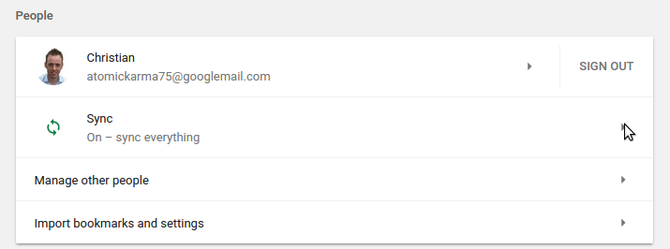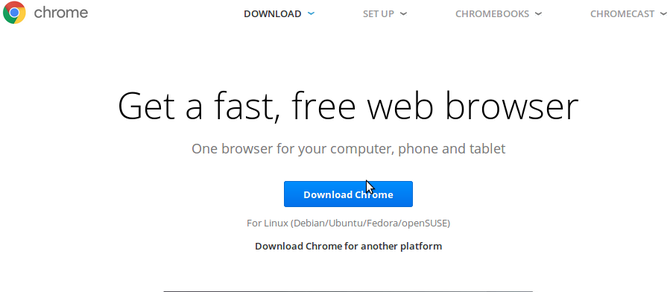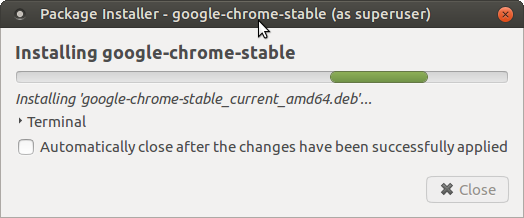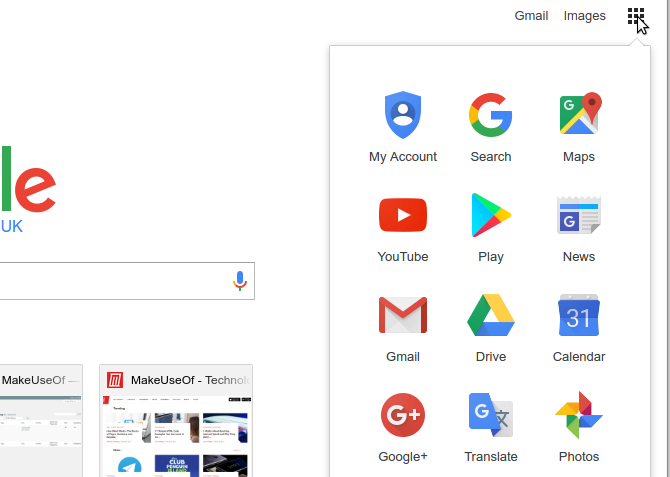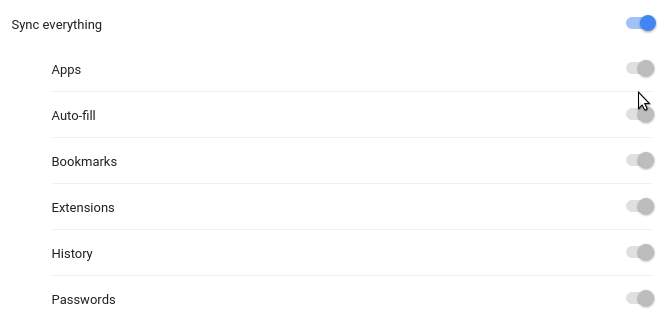If you're migrating from Windows to Linux, one of the most valuable things you can take with you is your web browser. Packed with bookmarks, history, and passwords, your browser is your gateway to the web.
Switching to a new operating system like Linux without the benefit of a personalized browser can be problematic. Passwords can be a massive problem -- if you have collected favorite bookmarks over the years, their loss can also be a big issue.
One obvious way around this is to use the Chrome browser. Simply using a Google account with Chrome will sync your bookmarks, history and passwords to a new device. But Linux operating systems rarely, if ever, ship with Chrome.
The Default Linux Browser: Never Chrome
Why is Chrome never preinstalled in Linux?
It's mainly to do with two things: one, the open source philosophy, and two, privacy. As Chrome isn't open source, you'll find that Linux operating systems (also known as distributions) will ship with different browsers. Examples include:
- Mozilla Firefox
- Slimjet
- Qupzilla
The Chromium browser (upon which Chrome is built) can also be installed on Linux. Other browsers are available, too.
Google's habit of tracking your behavior online has also discouraged distribution teams from including it. And this is a big issue. Installing Chrome on Linux is essentially trading privacy for the ease of migrating data.
If privacy is an issue for you, of course, you're probably not going to be using Chrome to start off with. But it's a great browser to help ease your way into the Linux world.
Syncing Google Chrome Data From Windows to Linux
In order to carry your Chrome browser data from Windows to your chosen Linux distribution, you need to have a Google account associated with your browser on Windows. This will ensure that your data is synced via the Google cloud to the browser on Linux.
Some people prefer not to sign into Chrome on Windows. It is an extremely useful option, however. For instance, if you have an Android phone, it will typically have Chrome installed. By signing into the browser on Windows, you can sync the browser data between devices. (As long as you keep your phone locked with a strong password or fingerprint, your data will be secure.)
The same syncing is possible between Windows and your new Linux operating system. Just make sure you have syncing enabled. Typically switched on by default, you'll find it in the Chrome Settings menu, under People.
Settings, passwords, bookmarks (i.e. "favorites"), and open tabs can be individually enabled and disabled. These all sit under the umbrella Sync everything, which can be toggled to enable or disable all of the options.
How to Install Chrome on Linux
Get started by heading to the Chrome download page and clicking the Download Chrome button (for Debian/Ubuntu/Fedora/openSUSE).
Next, select the option that matches your hardware and operating system. For instance, I have a 64-bit laptop running Ubuntu, so I selected 64-bit .DEB (for Debian/Ubuntu).
Check the terms of service, then click Accept and install. The package will download, and you should be prompted to run it with the package manager on your Linux system. Use this to install Chrome.
If your distro is not supported and you want to use Chrome, community-supported variants built on Chromium are available. However, these will not support native data syncing.
Should you prefer to install Google Chrome via the command line, you can do so with:
sudo apt-get install libxss1 libappindicator1 libindicator7wget https://dl.google.com/linux/direct/google-chrome-stable_current_amd64.deb
sudo dpkg -i google-chrome*.deb
This is for Debian/Ubuntu. Simply change the file name for the Fedora/openSUSE variant.
Migrate Your Browsing From Windows to Linux
Once the software is installed, you'll be able to open it and start browsing the web right away. To carry your vital browsing data across from your Windows-based browser profile, you'll need to log into Chrome.
Look for the icon in the top-right corner that looks like a 3x3 grid. Click this, then My Account. In the resulting screen, click Sign in, then add the credentials for the Google account you've been using with Chrome on Windows.
Next, check that Chrome is syncing the same options as it is in Windows. Open the menu, go to Settings, and look at the Sync everything option. What is selected here should match the configuration in Windows.
You're now ready for continuity browsing! Go ahead and give it a go. You can test how well it works by visiting a site that that has a password saved in the Chrome browser on Windows. If you can log in, the sync has worked.
Need to Migrate Firefox Bookmarks?
There are easier ways to migrate browser data and passwords from Windows. For example, if you use Mozilla Firefox, simply use the export bookmarks option to save your bookmarks in a HTML file. They can then be imported into Firefox on your Linux computer.
And if you want to export passwords as well, you can with the help of an add-on called Password Exporter [No Longer Available]. Data is saved as XML or CSV, and can be migrated between operating systems.
Have you migrated from Windows to Linux? Did you run into any problems doing so? What solutions did you employ, or are you still experiencing these issues? Or are you being put off switching to Linux by perceived data migration issues? Use the comments box below to tell us!


